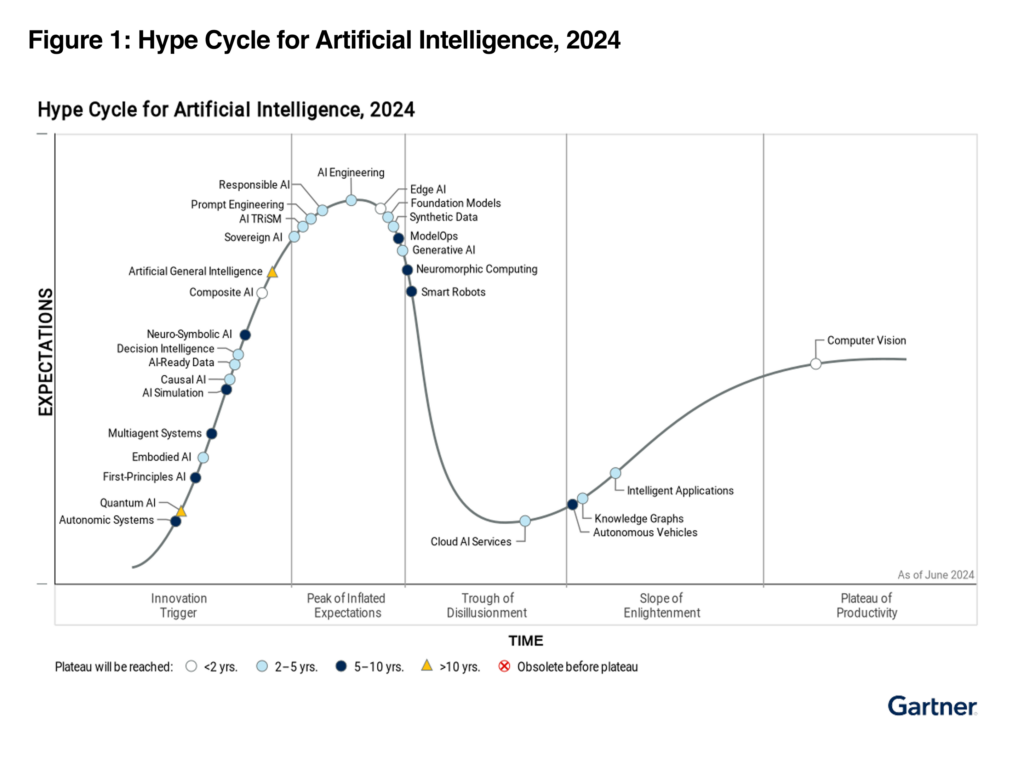Beyond The Hype: Realistic Expectations For AI Intelligence

Table of Contents
Current Capabilities of AI Intelligence
AI's capabilities are rapidly advancing, particularly within specific domains. Understanding these strengths and weaknesses is crucial for harnessing AI's transformative potential responsibly.
Strengths in Specific Domains
AI excels in tasks requiring pattern recognition and data processing at scales beyond human capacity. Consider these examples:
- Image Recognition: AI powers facial recognition systems, medical image analysis (detecting tumors, for instance), and self-driving car technology. However, even here, limitations exist; algorithms can be biased, leading to misidentification, and complex or unusual images can still pose challenges.
- Natural Language Processing (NLP): AI drives advancements in machine translation, chatbots, and sentiment analysis. While AI can translate languages and generate human-like text, it often struggles with nuanced language, sarcasm, and context-dependent understanding.
- Game Playing: AI has achieved superhuman performance in games like chess and Go, demonstrating exceptional strategic thinking and computational power. These achievements highlight AI's ability to master complex rule-based systems, but they don't translate directly to real-world problem-solving.
The Role of Machine Learning
Machine learning (ML) is the driving force behind many AI advancements. It involves algorithms that learn from data without explicit programming. Deep learning, a subset of ML, uses artificial neural networks with multiple layers to analyze complex data. Different types of ML exist:
- Supervised Learning: The algorithm learns from labeled data (e.g., identifying cats and dogs in images based on labeled examples).
- Unsupervised Learning: The algorithm finds patterns in unlabeled data (e.g., customer segmentation based on purchasing behavior).
- Reinforcement Learning: The algorithm learns through trial and error, receiving rewards for correct actions (e.g., training a robot to walk).
Despite its power, machine learning faces limitations. Algorithms heavily rely on large, high-quality datasets, which can be expensive and difficult to obtain. Furthermore, computationally intensive processes are often required, limiting scalability and real-time applications.
Limitations of Current AI Intelligence
While AI showcases remarkable abilities, it's crucial to acknowledge its limitations. These limitations highlight the significant gap between current AI and human-level intelligence.
The Lack of Common Sense and Generalization
A major hurdle for AI is its lack of common sense reasoning. AI systems struggle to apply knowledge learned in one context to another. For example, an AI might excel at identifying objects in images but fail to understand the implications of those objects in a real-world scenario. Research in cognitive architectures attempts to address this by building more flexible and generalizable AI systems.
Ethical Concerns and Bias
AI systems inherit biases present in the data they are trained on, potentially leading to discriminatory outcomes. For example, facial recognition systems have shown higher error rates for people with darker skin tones. Addressing these biases is crucial for ensuring fairness and equity in AI applications. Ongoing efforts focus on developing algorithms that are less susceptible to bias and promoting ethical guidelines for AI development and deployment.
The "Intelligence" Misconception
It's essential to dispel the misconception that current AI equals human-level intelligence. We are currently in the realm of narrow AI, which excels at specific tasks but lacks the general intelligence and adaptability of humans. Artificial General Intelligence (AGI), a hypothetical AI with human-level intelligence, remains a distant prospect. Current AI systems are powerful tools, but they lack genuine understanding, consciousness, and the common sense reasoning abilities of humans.
Conclusion
In summary, AI intelligence offers transformative potential across numerous fields, demonstrating remarkable capabilities in specific domains like image recognition and natural language processing. However, it's crucial to maintain realistic expectations. Current AI lacks common sense, is susceptible to bias, and falls far short of human-level intelligence. By understanding the realistic expectations for AI intelligence, we can harness its transformative power responsibly and effectively. Further exploration into the ethical implications and limitations of AI is vital for its safe and beneficial development.

Featured Posts
-
 Jan 6 Hearing Witness Cassidy Hutchinson To Publish Memoir This Fall
Apr 29, 2025
Jan 6 Hearing Witness Cassidy Hutchinson To Publish Memoir This Fall
Apr 29, 2025 -
 Nyt Spelling Bee March 13 2025 Complete Solutions And Pangram
Apr 29, 2025
Nyt Spelling Bee March 13 2025 Complete Solutions And Pangram
Apr 29, 2025 -
 Secret Service Closes Investigation Into White House Cocaine Incident
Apr 29, 2025
Secret Service Closes Investigation Into White House Cocaine Incident
Apr 29, 2025 -
 Reliance Stock Soars 10 Month High Following Earnings Report
Apr 29, 2025
Reliance Stock Soars 10 Month High Following Earnings Report
Apr 29, 2025 -
 Israels Gaza Aid Ban Growing Concerns Over Worsening Humanitarian Situation
Apr 29, 2025
Israels Gaza Aid Ban Growing Concerns Over Worsening Humanitarian Situation
Apr 29, 2025
Latest Posts
-
 Louisville Tornado 11 Years Later Remembering The Storm And Recovery
Apr 29, 2025
Louisville Tornado 11 Years Later Remembering The Storm And Recovery
Apr 29, 2025 -
 Louisville Mail Delivery Issues Union Leader Announces Improvement
Apr 29, 2025
Louisville Mail Delivery Issues Union Leader Announces Improvement
Apr 29, 2025 -
 Postal Union Reports End To Louisville Mail Delays Near
Apr 29, 2025
Postal Union Reports End To Louisville Mail Delays Near
Apr 29, 2025 -
 Louisville Mail Delays End In Sight Says Postal Union Leader
Apr 29, 2025
Louisville Mail Delays End In Sight Says Postal Union Leader
Apr 29, 2025 -
 Nws Kentucky Getting Ready For Severe Weather Awareness Week
Apr 29, 2025
Nws Kentucky Getting Ready For Severe Weather Awareness Week
Apr 29, 2025
